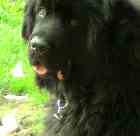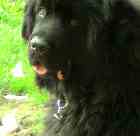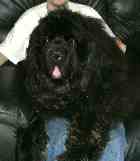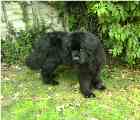Canine Arthritis
Canine arthritis is a heartbreaking condition, but one expects it to appear in an older dog, especially in a large dog breed.
It is particularly devastating, for both the owner and the dog, when it appears at a young age. There is no cure for arthritis in dogs, only medications and supplements to alleviate the condition. However, some success has been achieved with joint replacement surgery, much as is done in humans. This is a very expensive procedure, running into thousands of pounds, so lifetime insurance cover is an essential part of owning a newfoundland dog.
If the condition strikes in the hips or back legs, it can be possible under certain circumstances to replace the joints, but the disease in the front legs, as Joshua has, is more difficult because of the sheer weight of these dogs. The recovery time and care will also be stressful, especially for a young dog.
X-rays are needed to diagnose the disease effectively, then a course of anti-inflammatories can be given. The body produces glucosomine and chondroitin naturally, but the disease reduces the amount naturally produced. Without the addition of these supplements, my Joshua would not be able to walk. However, I have found that hydrotherapy is the best treatment to alleviate the condition. Your insurance policy may provide cover for this, so check carefully when you take out your insurance.
Leg tremors in a newfoundland dog can indicate arthritis. However, it is more likely to be growing pains, which many giant breeds do get because of the speed with which they grow. This is something they will grow out of when they reach maturity, but it is still advisable to get a vet to check these symptoms.
Early signs of the disease are limping, stiffness in getting up and excessive licking of the affected area.




